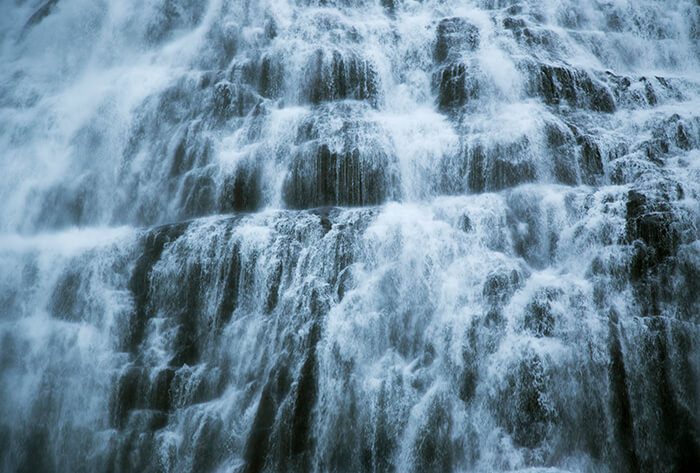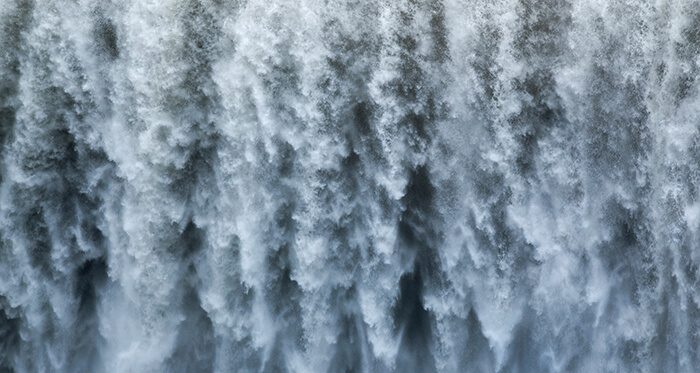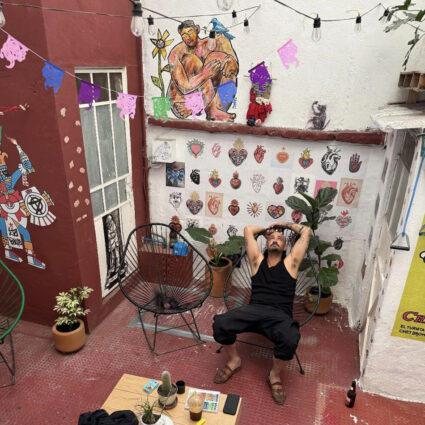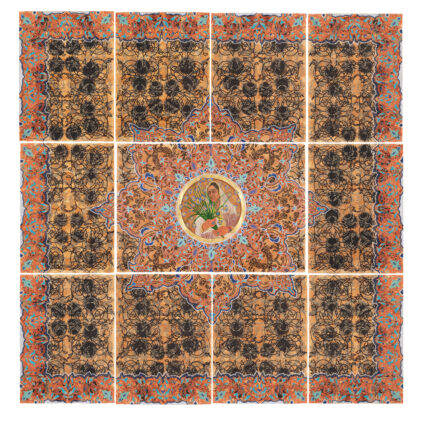
Richard Levy Gallery, Albuquerque
June 9 – July 20, 2018
Confession: water freaks me out. Floods, hurricanes, waves of any size, hail, steam, swamps, melting glaciers, rising sea levels, snow—it doesn’t matter. And don’t get me started on modern plumbing or droughts, for that matter. Regardless of form or scarcity, H20 fills my being with anxiety.
Presumably not so thin-skinned is artist Eric Tillinghast, who has been using water as sculptural material since 1994. His exhibition Þyngdarljóð–Gravity’s Poetry, on view through July 20 at Richard Levy Gallery in Albuquerque, is comprised of a series of “moving images” of Iceland’s largest waterfalls, which he spent two months documenting.
Tillinghast is attracted to these waterfalls because of a phenomenon that only occurs when water can fall far enough to reach terminal velocity, that is, the highest speed an object can attain as it falls through a fluid. In terms of the waterfalls, “the air surrounding the water creates enough resistance to push it apart, which results in a visual display of undulating curtains of water.” A poetics of force, no doubt.
The artist’s lightbox photographs of these fluid curtains show dark, cool, textured, and voluminous subject matter. The limited edition prints bleed to the edge with no surface glare, filling the black frames with slightly disorienting perspectives.
Part of what sets these photographs apart from Tillinghast’s contemporaries is how he re-presents, rather than strictly captures, the water’s motion, the intensity of which varies from work to work. For example, while fellow photographer Clifford Ross throws himself at the mercy of an ocean wave’s force of motion for the perfect image of that one monumental moment, Tillinghast chooses to completely fill his frame with the repetitive nature of flowing water, offering no horizon, no environs, essentially no end to the surge. Our eyes remain fixed on the intensity of rapid vertical freefall.

The actual movement in these images is generated by a mechanical looping device he created and installed which operates behind the scene, so to speak, within a custom-built lightbox. A continuous loop of hand-painted clear plastic sheeting advances a mark-making pattern, visible when looking at the illuminated photograph, that diffuses light and color. In essence, Tillinghast “re-animates” the images.
As I peer literally through the image to see the artist’s marks, I’m reminded of water’s function as a medium, a catalyst, as well as wind and gravity, water’s conspiring partners which greatly contribute to the varied surface of our Earthly terrain. Also unavoidable are the numerous roles that water plays in cultural practices and its myriad imprints on our psychology.
As I stood in the gallery, the sound effects fluctuated between calming white noise and, well, relentless noise. The images shifted back and forth from engaging to eerie; the combination of frozen movement depicted in the image, backed by the suspiciously steady motion of the artist’s mechanical device—at times interrupted by unavoidable technological glitches—created shadow play–like effects that highlight the disconnect between lived experience and artistic representation.
The increasingly apparent disjointed speed of the mechanical movement and the logic of the actual velocity of the waterfalls led me to consider communities around the world (New Mexico included) who are dealing with the catastrophic extremes of this necessary element—adapting to its presence or lack or inconsistencies.
For as long as we can maintain the suspension of disbelief, Þyngdarljóð–Gravity’s Poetry allows us to imagine that water can be controlled, contained, cajoled. Or perhaps, in moments where belief is thrown into question, we accept the fact that nature’s force is beyond our control. As many people in New Mexico are aching for snowmelt, runoff, and any form of moisture imaginable, Tillinghast’s photographs offer a reminder of the unstoppable, generative forces of the world. After all, water seeks its own level and has a way of getting in.



